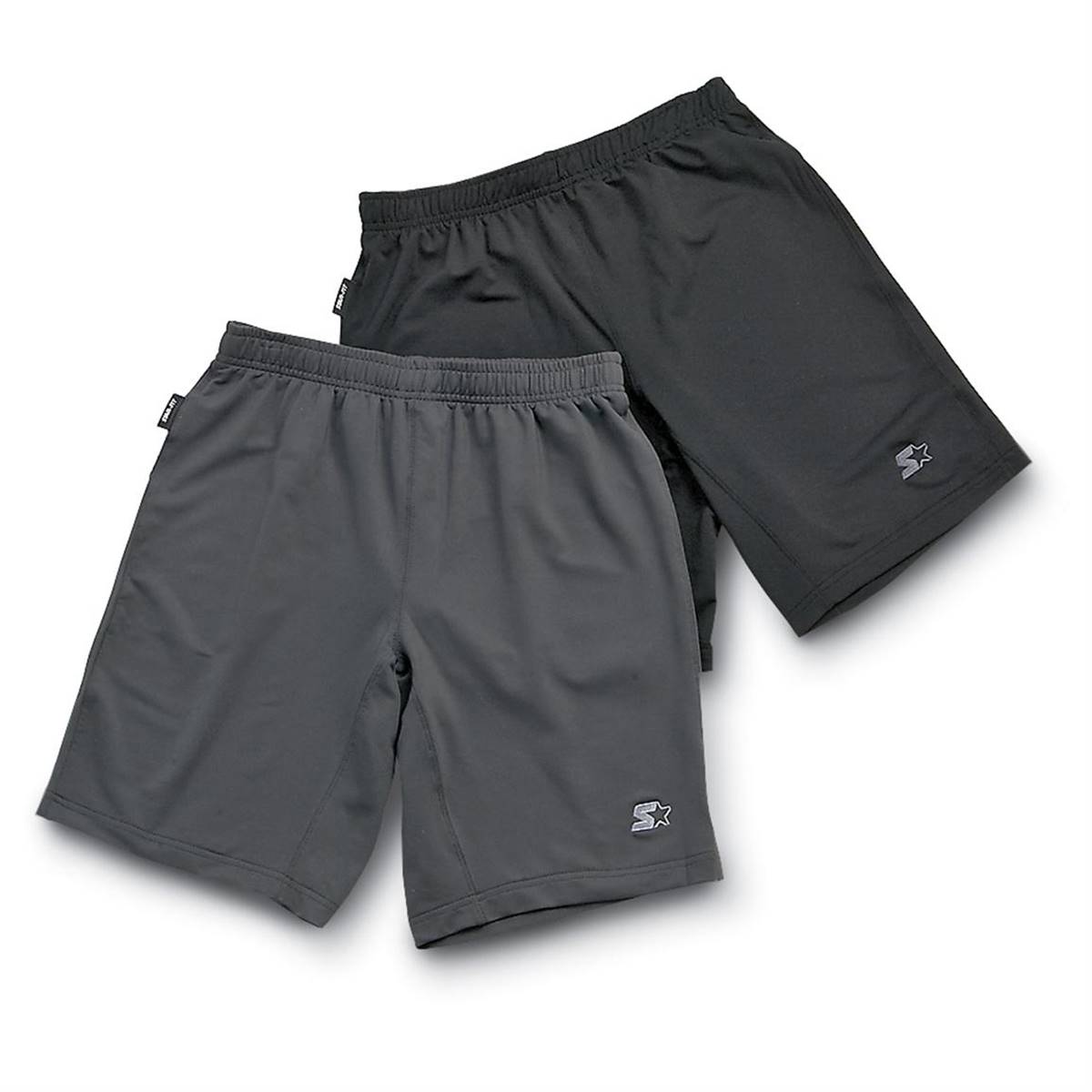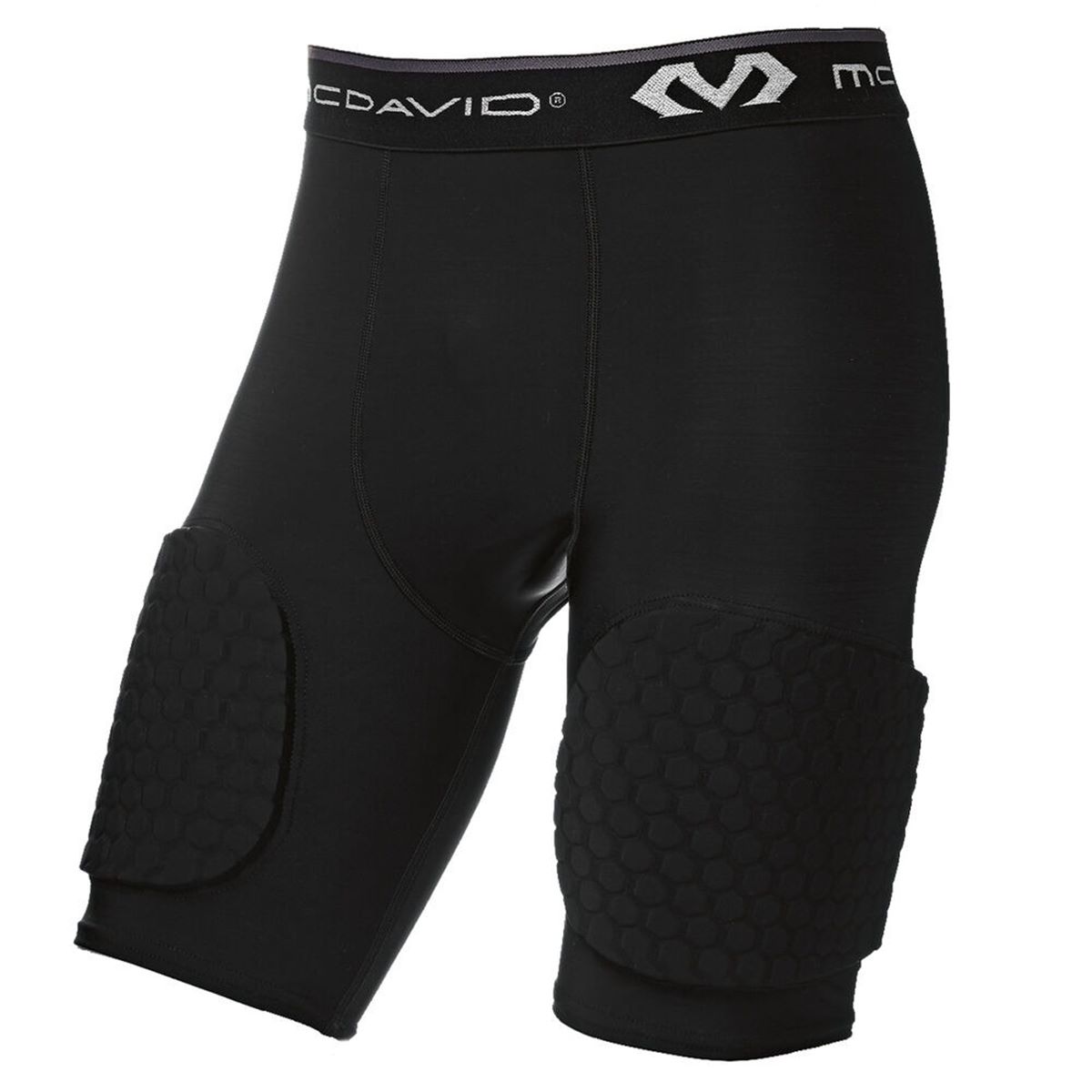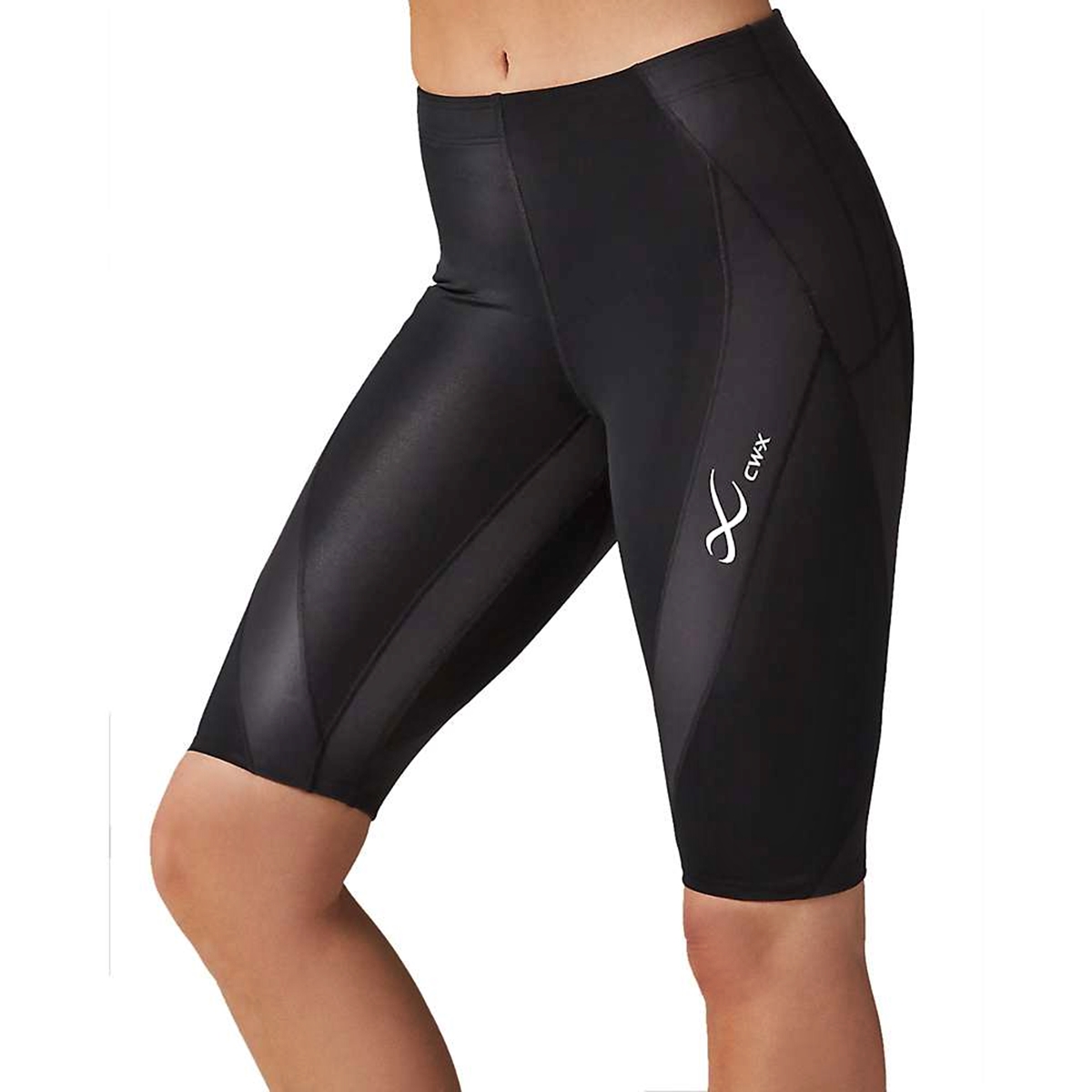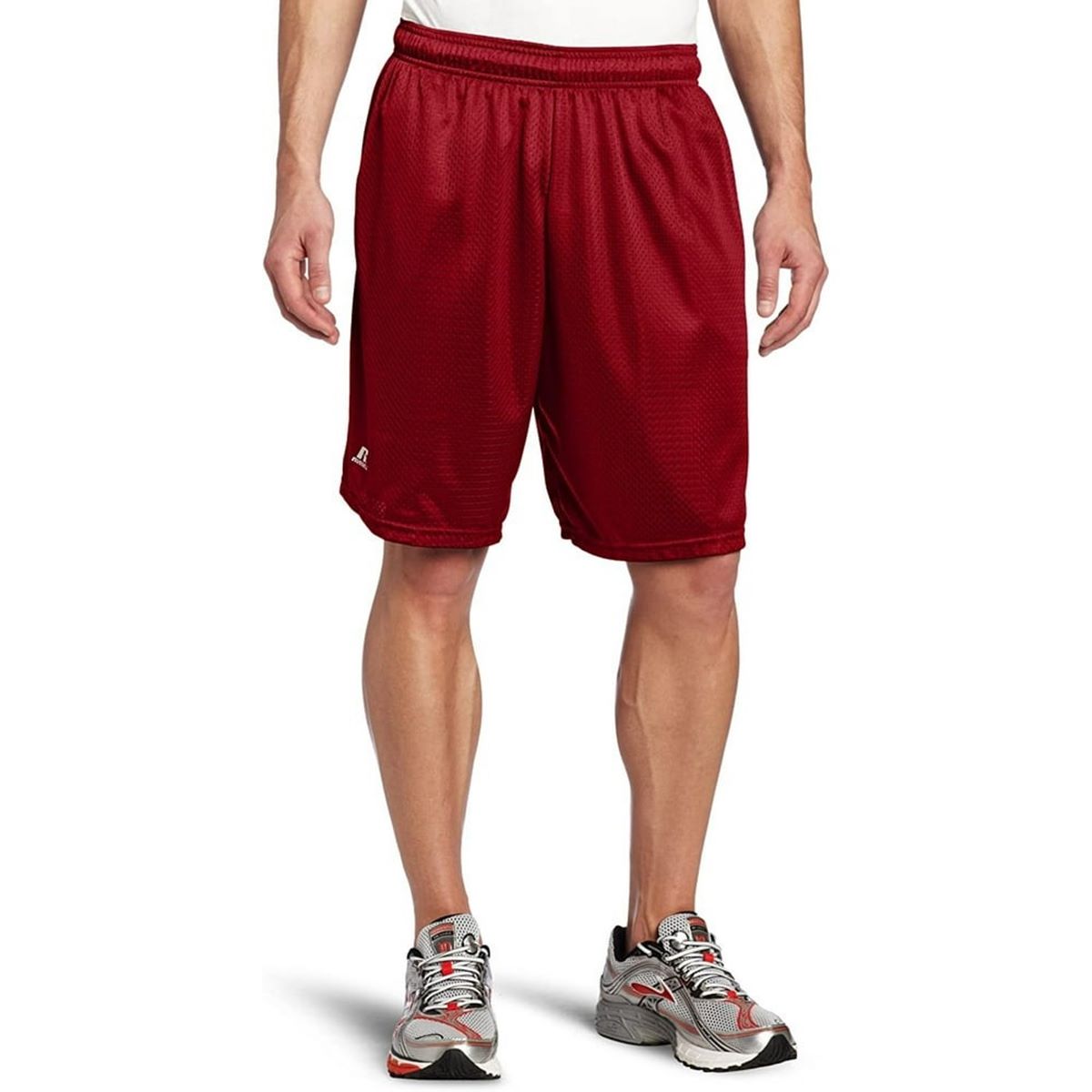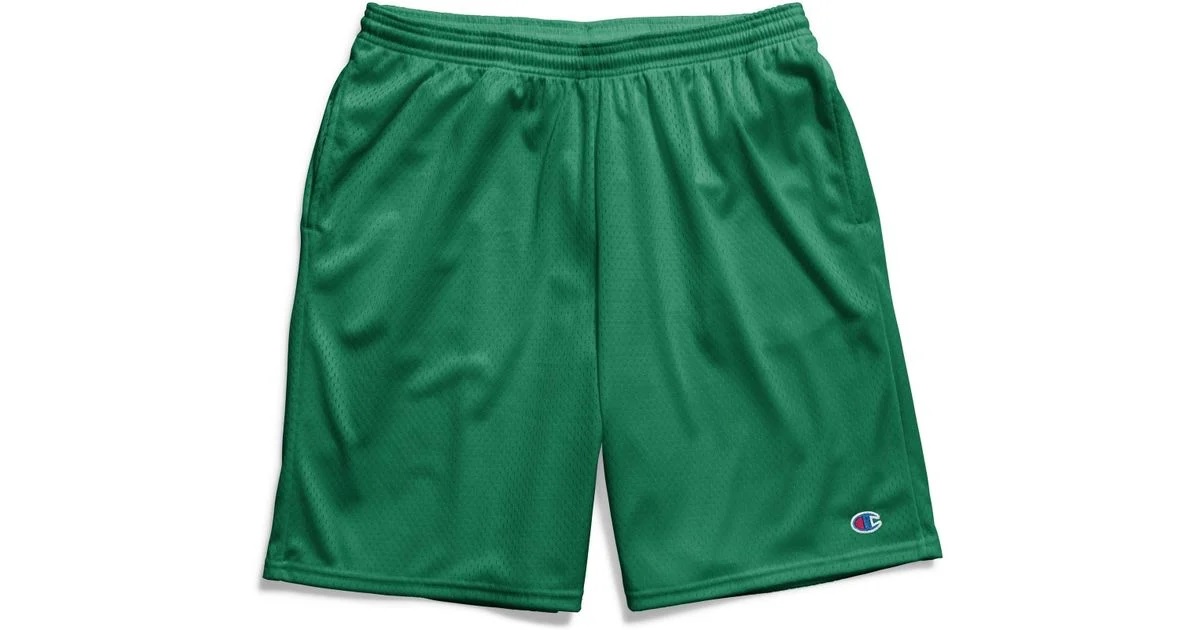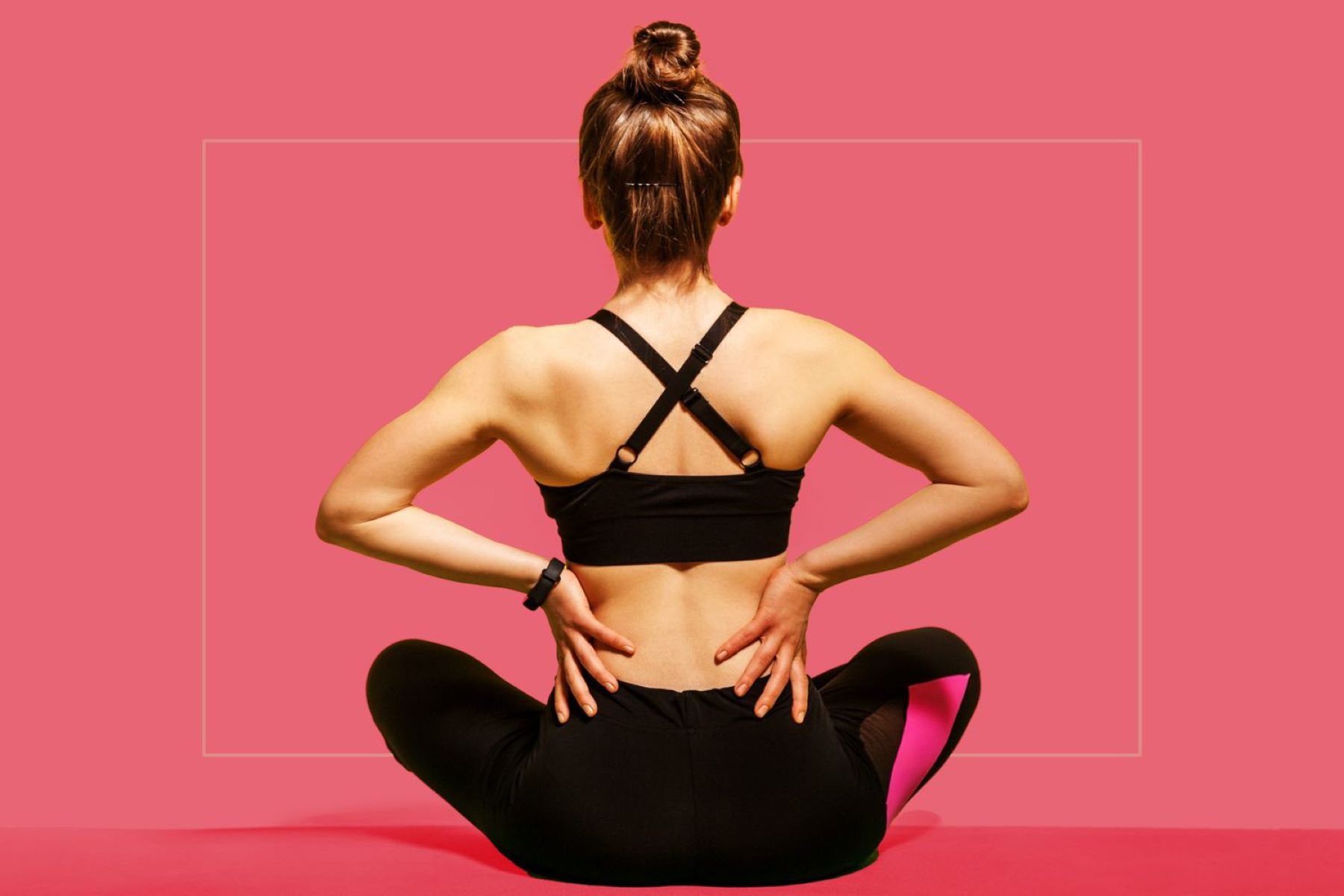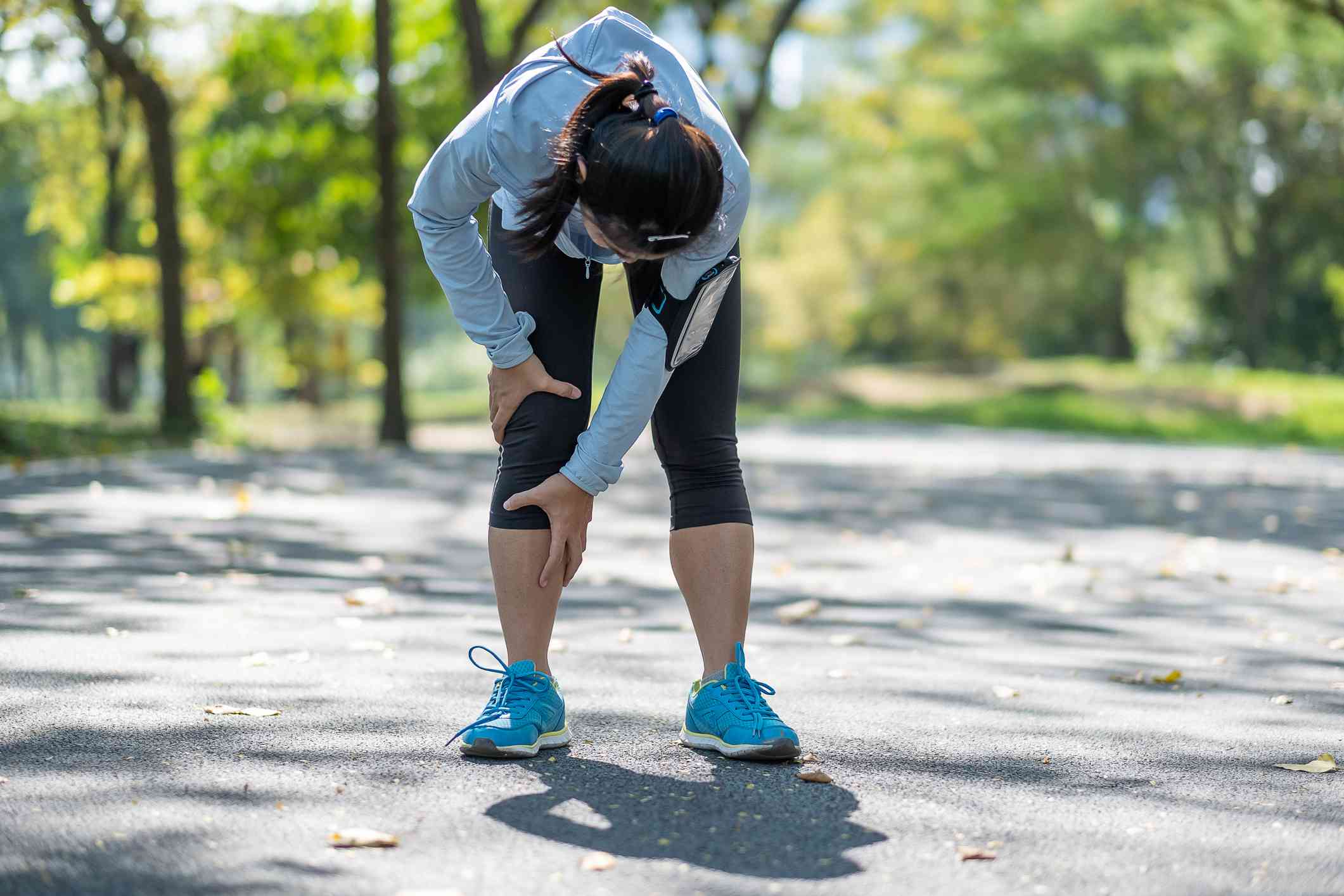

Featured
Why Does My Knee Hurt When I Workout
Modified: August 19, 2023
Featured article: Discover the reasons behind knee pain during workouts and learn effective strategies to prevent and alleviate discomfort.
Introduction
When you’re dedicated to maintaining an active lifestyle and hitting the gym regularly, the last thing you want is the nagging pain in your knee every time you work out. However, knee pain during workouts is a common complaint that many people experience. Understanding why your knee hurts during exercise is crucial to finding the appropriate solutions and preventing further injury.
There are several potential causes for knee pain during workouts, ranging from minor muscle strains to more serious conditions like osteoarthritis or ligament tears. It’s important to be aware of these common culprits and take proactive steps to prevent or manage the pain. This article will delve into the various reasons behind knee pain during workouts and explore some useful tips to mitigate the discomfort, allowing you to continue pursuing your fitness goals without hindrance.
Before we dive into the specific causes of knee pain, it’s important to note that if you experience severe or persistent pain, it’s always recommended to consult a healthcare professional. They can provide an accurate diagnosis and personalized treatment plan based on your specific condition.
Now, let’s explore the common causes of knee pain during workouts and learn how you can prevent and manage it effectively.
Common Causes of Knee Pain During Workouts
Knee pain during workouts can be attributed to several factors, including overuse, muscle imbalances, poor form or technique, or underlying medical conditions. Understanding these common causes can help you identify the root of your knee pain and take appropriate measures to address it. Let’s take a closer look at some of the most prevalent causes:
- Patellofemoral Pain Syndrome (PFPS): Also known as runner’s knee, PFPS occurs when the patella (kneecap) and the femur (thigh bone) do not align properly. This misalignment causes pain and inflammation in the knee joint.
- Runner’s Knee: This condition, technically known as iliotibial (IT) band syndrome, affects runners and cyclists. It occurs when the IT band, a thick band of connective tissue that runs along the outside of the thigh, becomes irritated or inflamed.
- IT Band Syndrome: Similar to runner’s knee, IT band syndrome causes pain on the outside of the knee. It is often associated with activities that involve frequent bending and straightening of the knee, such as running, jumping, or squatting.
- Osteoarthritis: Osteoarthritis is a degenerative joint disease that causes the cartilage in the knee joint to wear away over time. This can lead to bone-on-bone friction, resulting in pain and inflammation.
- Meniscus Tears: The meniscus is a cartilage pad that acts as a shock absorber in the knee joint. Tears or injuries to the meniscus can occur due to sudden twisting or pivoting movements, causing knee pain and limiting movement.
- Ligament Strains: The knee is supported by several ligaments, including the anterior cruciate ligament (ACL) and the posterior cruciate ligament (PCL). Strains or tears in these ligaments can cause instability and significant pain during physical activities.
- Iliotibial (IT) Band Friction Syndrome: This condition occurs when the IT band rubs against the outside of the knee, leading to inflammation and pain. It is often accompanied by a sharp, burning sensation during movements.
- Patellar Tendonitis: Also known as jumper’s knee, patellar tendonitis is an overuse injury that affects the tendon connecting the kneecap to the shinbone. It typically causes pain just below the kneecap and can worsen with activities that involve jumping or squatting.
- Bursitis: Bursae are fluid-filled sacs that cushion the knee joint. When these sacs become inflamed due to repetitive motions or direct impact, it leads to bursitis. The resulting pain and swelling can hinder your workouts.
Knowing the potential causes of your knee pain is the first step towards finding relief. However, it’s essential to consult with a healthcare professional for an accurate diagnosis and appropriate treatment plan tailored to your specific condition.
Patellofemoral Pain Syndrome (PFPS)
Patellofemoral Pain Syndrome (PFPS), commonly known as runner’s knee, is a common cause of knee pain during workouts. It occurs when the patella (kneecap) and the femur (thigh bone) do not align properly, causing irritation and inflammation in the soft tissues surrounding the kneecap.
Several factors can contribute to the development of PFPS, including overuse, muscle imbalances, poor biomechanics, and improper training techniques. Activities that involve repetitive knee bending, such as running, jumping, or squatting, can exacerbate the condition.
Symptoms of PFPS typically include a dull, aching pain behind or around the kneecap. The pain is often aggravated during activities like going up or down stairs, kneeling, or sitting for extended periods with bent knees. Some individuals may also experience swelling or a grinding sensation in the knee joint.
To alleviate PFPS and prevent further discomfort, there are several strategies you can implement:
- Rest and Ice: Allow your knee to rest and apply ice packs for 15-20 minutes at a time, several times a day, to reduce inflammation and relieve pain.
- Physical Therapy Exercises: Strengthening the muscles around the knee, particularly the quadriceps and hip muscles, can help improve knee alignment and reduce stress on the patellofemoral joint. Consult with a physical therapist to learn exercises specifically targeted towards PFPS.
- Patellar Taping or Bracing: Utilize patellar taping or wear a brace to provide additional support to the kneecap and reduce pain during physical activities. These devices can help align the patella and relieve stress on the surrounding structures.
- Modify Your Workouts: Avoid activities that aggravate the pain, such as high-impact exercises or prolonged periods of sitting with bent knees. Instead, incorporate low-impact exercises like swimming or cycling to maintain your fitness level without placing excessive stress on the knee joint.
- Proper Footwear: Ensure that you are wearing appropriate footwear that provides adequate cushioning and support for your feet and knees. Consider visiting a specialized running store to get fitted for shoes that accommodate your specific foot mechanics.
While these measures can often alleviate symptoms of PFPS, it’s important to consult with a healthcare professional, such as a physical therapist or orthopedic specialist, for a comprehensive evaluation and individualized treatment plan. They can assess your condition, address any underlying factors contributing to PFPS, and guide you towards a full recovery.
Runner’s Knee
Runner’s knee, technically known as patellofemoral pain syndrome (PFPS), is a common condition that causes knee pain during workouts, particularly among runners and athletes who engage in activities that involve repetitive knee movements. It occurs when the patella (kneecap) doesn’t track properly along the femur (thigh bone), leading to irritation and inflammation of the surrounding tissues.
The main contributing factors of runner’s knee include muscle imbalances, poor running mechanics, overuse, and inadequate rest and recovery. Weakness in the quadriceps and hip muscles, tightness in the IT band (iliotibial band), and biomechanical issues can all contribute to the development of runner’s knee.
Symptoms of runner’s knee typically manifest as a deep, aching pain behind or around the kneecap. The pain may intensify during activities that involve bending the knee, such as running, stair climbing, squatting, or sitting with bent knees for prolonged periods. Some individuals may also experience a popping or grinding sensation in the knee joint.
If you’re experiencing runner’s knee, the following tips can help manage the pain and prevent further aggravation:
- Modify Activities: Reduce or temporarily avoid high-impact activities that exacerbate the pain, such as running or jumping. Instead, engage in low-impact exercises like swimming or cycling to maintain cardiovascular fitness without placing excessive stress on the knee joint.
- Ice and Rest: Apply ice to the affected area for 15-20 minutes at a time to reduce inflammation. Incorporate adequate rest days into your workout routine to allow the knee to heal and recover.
- Stretching and Strengthening: Engage in regular stretching exercises to improve flexibility and reduce muscle tightness in the quadriceps, hamstrings, and IT band. Additionally, focus on strengthening the muscles around the knee, particularly the quadriceps and hip muscles, to provide better support and stability to the knee joint.
- Use Knee Braces or Straps: Consider wearing a knee brace or strap specifically designed for runner’s knee. These supports can help alleviate pain, provide compression, and support the knee during physical activities.
- Proper Footwear: Ensure that you are wearing appropriate running shoes that provide adequate cushioning and support for your feet and knees. Consider consulting with a specialist or a knowledgeable salesperson at a running store to find shoes that suit your specific foot mechanics.
While these self-care measures can often alleviate symptoms of runner’s knee, it’s important to consult with a healthcare professional, such as a sports medicine physician or physical therapist, for a thorough evaluation and personalized treatment plan. They can analyze your running mechanics, address underlying factors contributing to runner’s knee, and provide targeted guidance to help you recover and prevent future occurrences.
IT Band Syndrome
IT Band Syndrome, also known as iliotibial band syndrome, is a common cause of knee pain during workouts, especially among runners and athletes involved in activities that require repetitive knee flexion and extension. The iliotibial band is a thick band of connective tissue that runs along the outside of the thigh, from the hip to the shinbone.
When the IT band becomes tight or inflamed, it can rub against the bony prominence on the outer side of the knee, causing pain and discomfort. This condition is often seen in individuals who increase their training intensity or mileage too quickly, as well as those with muscle imbalances or biomechanical issues.
Symptoms of IT band syndrome typically include sharp or burning pain on the outside of the knee, which may worsen with activities like running, stair climbing, or cycling. The pain may also radiate up the thigh or down towards the shin.
To alleviate the symptoms of IT band syndrome and prevent its recurrence, consider the following strategies:
- Rest and Ice: Allow your knee to rest and apply ice packs to the affected area for 15-20 minutes at a time. Resting can help reduce inflammation and provide an opportunity for the IT band to heal.
- Stretching and Foam Rolling: Perform stretches targeting the IT band, quadriceps, and hip muscles to alleviate tightness and restore flexibility. Foam rolling the IT band can also help release tension and reduce friction along the thigh.
- Strength Training: Focus on strengthening the muscles surrounding the hip and knee, such as the glutes and quadriceps, to provide better support and stability. This can help alleviate stress on the IT band and reduce the risk of recurrence.
- Gradual Progression: Avoid sudden increases in training intensity or mileage. Gradually build up your endurance and distance to allow your body to adapt and minimize the strain on the IT band.
- Proper Footwear and Gait Analysis: Ensure that you are wearing appropriate footwear that provides adequate support and cushioning. Consider getting a gait analysis done by a professional to identify any biomechanical issues and receive recommendations for corrective measures.
If your symptoms persist or worsen despite self-care measures, it’s essential to consult with a healthcare professional, such as a physical therapist or orthopedic specialist. They can assess your condition, identify contributing factors, and provide targeted treatment, which may include manual therapy, specific exercises, or other interventions.
Osteoarthritis
Osteoarthritis is a degenerative joint disease that can be a significant cause of knee pain during workouts. It occurs when the protective cartilage on the ends of the bones wears away, leading to bone-on-bone friction and resulting in pain, inflammation, and stiffness in the affected joint.
While osteoarthritis commonly affects older individuals, it can also develop in younger individuals due to factors such as previous knee injuries, repetitive stress on the joint, obesity, or genetic predisposition.
Symptoms of knee osteoarthritis may include pain, swelling, stiffness, and a decreased range of motion in the affected knee. The pain is often worse after periods of inactivity or during activities that put stress on the joint, such as running or jumping.
If you have knee osteoarthritis, there are several strategies to manage the symptoms and minimize the impact of the condition on your workouts:
- Low-Impact Exercises: Engage in low-impact exercises that put less stress on the knee joint, such as swimming, cycling, or using an elliptical machine. These activities can help maintain cardiorespiratory fitness without exacerbating the pain.
- Strength Training: Focus on strengthening the muscles surrounding the knee, such as the quadriceps and hamstrings. Strong muscles provide better support to the knee joint and can help alleviate pain and stiffness.
- Weight Management: Maintaining a healthy weight or losing weight if necessary can significantly reduce the stress on the knee joints, relieving pain and slowing down the progression of osteoarthritis.
- Hot and Cold Therapy: Apply heat, such as a warm towel or heating pad, to the knee joint to help relax muscles and increase blood circulation. Cold therapy, in the form of ice packs, can help reduce swelling and ease pain.
- Pain Medications and Supplements: Over-the-counter pain relievers can help alleviate mild to moderate pain. Additionally, certain supplements, such as glucosamine and chondroitin, may provide some relief by supporting joint health.
- Assistive Devices: Consider using assistive devices like knee sleeves, braces, or crutches to provide support and reduce stress on the affected knee joint during workouts.
Although these strategies can help manage the symptoms and improve your ability to exercise, it’s important to consult with a healthcare professional, such as an orthopedic specialist or physical therapist, to assess the extent of your osteoarthritis and develop an individualized treatment plan.
Meniscus Tears
Meniscus tears are a common cause of knee pain during workouts, particularly among athletes involved in sports that require sudden changes in direction or those that involve repetitive squatting, twisting, or pivoting movements. The meniscus is a C-shaped cartilage that acts as a shock absorber between the femur and tibia in the knee joint.
A meniscus tear can occur due to a sudden twisting motion or direct impact to the knee, or it can develop gradually over time due to wear and tear. When the meniscus is torn, it can cause pain, swelling, stiffness, and a sensation of locking or catching in the knee joint.
Treatment for a meniscus tear will depend on the severity and location of the tear, as well as other individual factors. However, there are several general strategies that can help manage the symptoms and promote healing:
- Rest and Ice: Take a break from activities that aggravate the pain, and apply ice packs to the affected area for 15-20 minutes at a time to reduce inflammation and alleviate swelling.
- Physical Therapy: A physical therapist can guide you through exercises to strengthen the muscles surrounding the knee joint, improve stability, and restore range of motion. They may also incorporate modalities such as ultrasound or electrical stimulation to promote healing.
- Bracing: In some cases, wearing a knee brace may provide support and stability to the knee joint, allowing the meniscus to heal. Your healthcare provider can recommend the appropriate type of brace for your specific condition.
- Medications: Over-the-counter pain relievers can help alleviate pain and reduce inflammation. Additionally, your doctor may prescribe stronger medications or recommend injections, such as corticosteroids or hyaluronic acid, for symptom relief.
- Surgical Intervention: Depending on the severity of the tear and the symptoms experienced, surgical treatment options may be considered. These can range from minimally invasive procedures to repair the meniscus to partial or complete removal of the damaged portion.
It’s crucial to consult with a healthcare professional, such as an orthopedic specialist, to accurately diagnose a meniscus tear and determine the best course of treatment. They can assess the extent and location of the tear using imaging tests and provide personalized recommendations to promote healing and restore functionality.
Ligament Strains
Ligament strains in the knee are a common cause of pain during workouts. The knee joint is supported and stabilized by several ligaments, including the anterior cruciate ligament (ACL), posterior cruciate ligament (PCL), medial collateral ligament (MCL), and lateral collateral ligament (LCL).
A ligament strain or tear can occur due to sudden twisting, hyperextension, or direct impact on the knee, often seen in sports or activities that involve rapid changes in direction or contact. Common symptoms of a ligament strain include pain, swelling, instability, and difficulty bearing weight on the affected leg.
The severity of a ligament strain can range from mild to severe, with treatment options varying based on the extent of the injury. Below are some general strategies for managing and recovering from a ligament strain:
- R.I.C.E: Employ the R.I.C.E. (Rest, Ice, Compression, Elevation) method immediately after the injury to reduce pain and inflammation. Rest the injured leg, apply ice packs for 15-20 minutes at a time, use a compression bandage to reduce swelling, and elevate the leg to minimize fluid build-up.
- Immobilization: Depending on the severity of the ligament strain, your healthcare provider may recommend using crutches or wearing a knee brace to stabilize the joint and prevent further damage.
- Physical Therapy: Rehabilitation exercises prescribed by a physical therapist can help regain strength, flexibility, and stability in the knee. These exercises may include gentle stretching, strengthening, and balance exercises.
- Pain Management: Over-the-counter pain medications can provide temporary relief from pain and inflammation. Your healthcare provider may also prescribe medication or recommend injections to manage pain and support the healing process.
- Surgical Consideration: In severe cases or when conservative treatment methods fail to improve symptoms, surgical intervention may be necessary. Surgery may involve ligament repair or reconstruction, depending on the specific ligament and the extent of the injury.
- Gradual Return to Activity: It is crucial to follow a gradual progression when returning to physical activity. Work closely with a healthcare professional and follow their recommendations to prevent re-injury and promote a safe return to your regular workouts.
If you experience a ligament strain, it is essential to consult with a healthcare professional, such as an orthopedic specialist or sports medicine physician. They can assess the extent of the injury, provide an accurate diagnosis, and guide you through an appropriate treatment plan to promote healing and restore full functionality to your knee joint.
Illiotibial (IT) Band Friction Syndrome
Illiotibial Band Friction Syndrome (ITBFS), commonly known as IT band syndrome, is a condition that causes knee pain during workouts, particularly in runners and cyclists. The iliotibial band (IT band) is a thick band of connective tissue that runs along the outside of the thigh, from the hip to the shinbone.
IT band syndrome occurs when the IT band becomes inflamed and rubs against the bony prominence on the outer side of the knee. This constant friction results in irritation, pain, and discomfort. Activities that involve repetitive knee bending, such as running or cycling, can exacerbate the condition.
Symptoms of IT band syndrome often include sharp or burning pain on the outer side of the knee. The pain may worsen with activities like running downhill, climbing stairs, or prolonged periods of physical exertion.
If you’re dealing with IT band syndrome, here are some strategies that can help alleviate the pain and manage the condition:
- Rest and Ice: Allow your knee to rest and apply ice packs to the affected area for 15-20 minutes at a time to reduce inflammation and alleviate pain.
- Stretching and Foam Rolling: Perform targeted stretches and foam rolling exercises to help alleviate tightness in the IT band, hip abductors, and quadriceps. This can help improve flexibility and reduce friction along the thigh.
- Strength Training: Focus on strengthening the muscles surrounding the hip, particularly the hip abductors and glutes. Stronger muscles can provide better support and stability to the IT band, reducing the risk of excessive friction.
- Modify Activities: Temporarily avoid activities that worsen the pain, such as running on uneven surfaces or downhill. Instead, opt for low-impact exercises like swimming or cycling to maintain fitness levels without aggravating the condition.
- Knee Straps or Taping: Using knee straps or taping techniques can help relieve pressure on the IT band and reduce pain during physical activities.
- Proper Training Techniques: Ensure that you have proper running or cycling form and that your equipment, such as shoes or bike setup, are suitable for your body mechanics. Consider consulting with a specialist or coach for technique analysis and recommendations.
If your symptoms persist or worsen despite these self-care measures, it is crucial to consult with a healthcare professional, such as a sports medicine physician or physical therapist. They can provide a comprehensive evaluation, identify any underlying factors contributing to IT band syndrome, and develop an individualized treatment plan to support your recovery.
Patellar Tendonitis
Patellar tendonitis, also known as jumper’s knee, is a common condition that causes knee pain during workouts, particularly in activities that involve repetitive jumping, running, or squatting. It is an overuse injury that affects the patellar tendon, which connects the kneecap (patella) to the shinbone (tibia).
Patellar tendonitis occurs when the tendon becomes inflamed and irritated due to excessive strain or repetitive stress. This can happen due to factors like sudden increases in training intensity, improper form or technique, inadequate warm-up, or muscle imbalances around the knee joint.
Symptoms of patellar tendonitis usually include pain and tenderness around the tendon, just below the kneecap. The pain may gradually worsen with activity and may be more noticeable when you press on the tendon or while performing exercises that require bending or extending the knee.
To manage and treat patellar tendonitis, there are several strategies that can help relieve pain and promote healing:
- Rest and Activity Modification: Allow your knee to rest and avoid activities that exacerbate the pain, such as jumping or deep squatting. Modify your workouts to include low-impact exercises, such as swimming or cycling, to maintain fitness levels while minimizing stress on the patellar tendon.
- Stretching and Strengthening: Engage in regular stretching exercises that focus on the quadriceps, hamstrings, and calf muscles to maintain flexibility and relieve tension around the knee joint. Additionally, performing strengthening exercises for the quadriceps and hip muscles can help improve overall knee stability and reduce strain on the patellar tendon.
- Ice and Compression: Apply ice packs to the affected area for 15-20 minutes at a time, several times a day, to reduce inflammation and alleviate pain. Using a compression bandage or knee sleeve can also help reduce swelling.
- Patellar Taping or Bracing: Taping techniques or patellar braces can provide additional support and stability to the patellar tendon, helping to relieve pain and reduce stress during physical activities.
- Nonsteroidal Anti-inflammatory Drugs (NSAIDs): Over-the-counter NSAIDs, such as ibuprofen or naproxen, can help reduce pain and inflammation. However, it’s important to consult with a healthcare professional before taking any medication, especially if you have any underlying health conditions.
If you experience persistent or severe pain despite these measures, it’s important to consult with a healthcare professional, such as a sports medicine physician or physical therapist. They can provide a thorough evaluation, assess your specific condition, and develop a personalized treatment plan to help alleviate your symptoms and facilitate a safe return to your regular workouts.
Bursitis
Bursitis is a common cause of knee pain during workouts. Bursae are fluid-filled sacs that cushion and reduce friction between bones, tendons, and muscles. When a bursa becomes inflamed, it leads to a condition known as bursitis.
In the knee joint, there are several bursae that can be affected, including the prepatellar bursa at the front of the knee, the pes anserine bursa on the inner side of the knee, and the prepatellar or infrapatellar bursa below the kneecap. Bursitis in any of these areas can cause pain and swelling.
Common causes of knee bursitis include repetitive knee movements, prolonged kneeling, direct trauma, or underlying conditions such as gout or rheumatoid arthritis. Symptoms often include localized pain, swelling, tenderness, and warmth over the affected bursa.
To manage bursitis and alleviate knee pain during workouts, consider the following strategies:
- Rest and Modify Activities: Allow your knee to rest and avoid activities that cause pain or put pressure on the affected bursa. Modify your workouts to focus on exercises that do not aggravate the condition, such as low-impact activities or upper-body exercises.
- Ice and Compression: Apply ice packs to the affected area for 15-20 minutes at a time, several times a day, to reduce inflammation. Compression bandages or knee sleeves can also be used to provide support and reduce swelling.
- Anti-inflammatory Medications: Over-the-counter nonsteroidal anti-inflammatory drugs (NSAIDs) like ibuprofen or naproxen can help reduce pain and inflammation. However, consult with a healthcare professional before taking any medication, especially if you have pre-existing medical conditions.
- Protective Padding: If bursitis is caused by repetitive pressure or friction, consider using protective padding when engaging in activities that may irritate the bursa. This can help reduce the stress on the affected area.
- Physical Therapy: A physical therapist can provide targeted exercises to strengthen the muscles around the knee joint, improve flexibility, and reduce stress on the bursa. They may also utilize modalities such as ultrasound or electric stimulation to promote healing.
- Fluid Aspiration: In some cases, a healthcare professional may recommend aspiration to remove excess fluid from an inflamed bursa. This may help alleviate pain and swelling.
While these measures can often provide relief, it’s important to consult with a healthcare professional, such as a sports medicine physician or physical therapist, to evaluate your condition and determine the underlying cause of the bursitis. They can recommend appropriate treatment options and develop a comprehensive plan to help you manage and overcome bursitis in the knee.
Tips to Prevent Knee Pain During Workouts
Preventing knee pain during workouts is crucial to maintaining an active lifestyle and reaching your fitness goals. By following these tips, you can minimize the risk of knee injuries and discomfort:
- Warm-up and Stretch Properly: Before starting any workout, spend a few minutes warming up with light cardio exercises to increase blood flow to the muscles. Follow this with dynamic stretches to loosen up the muscles around the knees.
- Strengthen Your Thigh Muscles: Strong quadriceps and hamstrings provide stability and support to the knee joint. Incorporate exercises like squats, lunges, leg extensions, and leg curls into your workouts to strengthen these muscles.
- Wear Proper Shoes and Use Correct Exercise Techniques: Choose footwear that provides adequate cushioning and support for your specific activities. Also, ensure you use proper form and technique during exercises to minimize stress on the knees.
- Gradually Increase Intensity and Duration of Workouts: Avoid sudden spikes in workout intensity or duration, as this can place excessive strain on the knees. Gradually progress your workouts to allow your body to adapt and avoid overloading the joints.
- Use Knee Supports or Braces: Consider using knee supports or braces, especially if you have a history of knee issues or are recovering from an injury. These supports can provide extra stability and reduce stress on the knees during workouts.
- Listen to Your Body and Rest When Needed: Pay attention to any pain or discomfort in your knees during or after workouts. If you experience persistent or worsening pain, give yourself adequate rest to allow your knees to recover before resuming intense workouts.
Remember, each person’s body is unique, and what works for one person may not work for another. It’s essential to listen to your body and seek guidance from a healthcare professional, such as a physical therapist or sports medicine physician, if you have specific concerns or persistent knee pain.
By implementing these preventive measures and maintaining overall physical fitness, you can reduce the risk of knee pain, injury, and enjoy a more fulfilling and pain-free workout experience.
Warm-up and Stretch Properly
A proper warm-up and stretching routine before your workouts is essential for preventing knee pain and injuries. It helps prepare the muscles, tendons, and ligaments around the knee joint for the physical demands of exercise. Here are some tips to ensure you warm up and stretch properly:
- Start with Light Cardio: Begin your warm-up with 5-10 minutes of light aerobic exercises such as brisk walking, jogging, or cycling. This increases blood flow, raises body temperature, and prepares your body for more intense movements.
- Dynamic Stretching: After the cardiovascular warm-up, incorporate dynamic stretching exercises into your routine. Dynamic stretches involve controlled movements that take the joints and muscles through their full range of motion. Examples of dynamic stretches for the lower body include leg swings, walking lunges, and high knees.
- Focus on the Lower Body: Place particular emphasis on stretching the muscles surrounding the knees, such as the quadriceps, hamstrings, calves, and hip flexors. Perform exercises like standing quad stretches, standing hamstring curls, and calf raises to target these muscle groups.
- Avoid Static Stretching: Save static stretching, where you hold a stretch for an extended period, for the end of your workout. Static stretching before exercise may actually decrease muscle elasticity and interfere with performance. Instead, use dynamic stretching to warm up the muscles and increase flexibility.
- Listen to Your Body: Pay attention to any discomfort or pain during stretching. Stretch to the point of tension, but not to the point of pain. If you feel any sharp or intense pain, modify or stop the stretch to avoid further injury.
- Be Consistent: Make warm-up and stretching a regular part of your workout routine. Consistency is key in reaping the benefits and reducing the risk of knee pain. Even on days when you have limited time, perform a shorter warm-up and incorporate some dynamic stretches.
Remember that warm-up and stretching routines should be tailored to your specific needs and fitness level. If you have any existing knee issues or concerns, it’s always a good idea to consult with a healthcare professional or a certified fitness instructor. They can provide guidance on the most suitable warm-up exercises and stretches for your individual circumstances.
Strengthen Your Thigh Muscles
Strengthening the muscles in your thighs is crucial for supporting the knee joint and preventing knee pain during workouts. The quadriceps at the front of the thigh, along with the hamstrings at the back, play a significant role in maintaining knee stability and absorbing impact. Here are some tips to strengthen your thigh muscles effectively:
- Squat Exercises: Incorporate squats into your workout routine to target both the quadriceps and hamstrings. Start with bodyweight squats and gradually progress to using dumbbells or a barbell to add resistance.
- Lunges: Lunges are another effective exercise for thigh muscle strengthening. Forward lunges, reverse lunges, and walking lunges all engage the quadriceps and hamstrings, helping to build strength and stability in the knees.
- Step-Ups: Step-ups are an excellent functional exercise that targets the quadriceps. Step onto a raised platform or bench, leading with one leg, and then step down. Alternate legs and repeat for a set number of repetitions.
- Leg Press: If you have access to gym equipment, using the leg press machine can be highly effective for building thigh muscles. Adjust the machine to your comfort level and perform controlled repetitions, focusing on engaging both the quadriceps and hamstrings.
- Hamstring Curls: Hamstring curls can specifically target the back of the thigh. You can perform this exercise using a machine at the gym or using resistance bands or sliders at home. Lie face down on a bench or mat and curl your legs towards your glutes.
- Bridges: Bridges primarily target the glutes, but they also engage the hamstrings and help with overall lower body strength. Lie on your back with knees bent, feet flat on the ground, and lift your hips off the floor while squeezing your glutes.
- Include Plyometric Movements: Once you have built a solid foundation of strength, consider adding plyometric exercises like jump squats or box jumps to your workout routine. These high-intensity movements can further enhance thigh muscle strength and power.
It is important to start with appropriate resistance or bodyweight and gradually increase the intensity as your strength improves. Be mindful of maintaining proper form throughout each exercise to avoid unnecessary strain on the knees. If you’re new to strength training or have any concerns, seek guidance from a certified fitness professional who can provide instructions on proper technique and personalize a workout plan for your needs.
Wear Proper Shoes and Use Correct Exercise Techniques
Wearing appropriate footwear and using correct exercise techniques are essential for protecting your knees during workouts. The right shoes provide stability, cushioning, and support, while proper form and technique help prevent knee pain and injuries. Here are some tips to ensure you wear proper shoes and use correct exercise techniques:
- Choose the Right Shoes: Invest in athletic shoes specifically designed for your chosen activity. Running shoes, for example, offer cushioning and shock absorption, while cross-training shoes provide stability for a variety of exercises. Visit a specialty store or consult a professional to find the right shoes for your foot type and activity.
- Replace Worn-out Shoes: Monitor the condition of your athletic shoes and replace them when they show signs of wear and tear or every 300-500 miles. Worn-out shoes provide less support and can contribute to knee pain and other injuries.
- Ensure Proper Shoe Fit: Shoes that are too tight or too loose can impact your biomechanics and increase stress on your knees. Make sure your shoes have a snug yet comfortable fit, with enough room for your toes to move.
- Warm Up and Cool Down: Begin your workouts with a warm-up routine to gradually increase blood flow to the muscles and prepare your body for exercise. Similarly, incorporate a cool-down period with gentle stretching to help prevent stiffness and promote recovery.
- Follow Proper Form and Technique: When performing exercises, pay careful attention to proper form and technique. Maintain a neutral spine, engage your core, and use the appropriate range of motion for each exercise. Improper form can put undue stress on your knees and increase the risk of injury.
- Avoid Overstriding: When running or walking, avoid overstriding as it can increase impact on the knees. Maintain a shorter stride length and aim for a foot strike that is closer to your center of gravity.
- Use Proper Alignment: Proper alignment is crucial during exercises that involve bending or flexing the knees. Be mindful of keeping your knees in line with your toes and not allowing them to collapse inward or outward.
- Seek Professional Guidance: If you’re new to exercise or unsure about proper technique, consider working with a certified personal trainer or fitness professional. They can teach you correct form, provide exercise modifications, and help prevent knee injuries.
By wearing the right shoes and practicing proper exercise techniques, you can minimize the strain on your knees and reduce the risk of knee pain or injuries. Remember to listen to your body, start slowly, and gradually increase the intensity of your workouts to allow your knees to adapt and strengthen over time.
Gradually Increase Intensity and Duration of Workouts
Gradually increasing the intensity and duration of your workouts is crucial for preventing knee pain and injuries. By allowing your body time to adapt to higher levels of exertion, you can build strength, endurance, and resilience in your knees. Here are some tips to help you gradually progress your workouts:
- Start Slowly: If you’re new to exercise or returning after a break, it’s important to start slowly and gradually increase the intensity and duration of your workouts. Begin with shorter sessions and lighter weights, giving your body time to adjust.
- Follow a Progressive Plan: Incorporate a progressive training plan that gradually increases the demands on your body over time. Increase your workout’s intensity, duration, or frequency by small increments each week rather than making sudden jumps.
- Listen to Your Body: Pay attention to how your body responds to exercise. If you experience any unusual pain or discomfort, slow down, modify your routine, or take rest days as needed. Pushing through pain can lead to overuse injuries and setbacks.
- Balance High-impact and Low-impact Activities: Include a mix of high-impact and low-impact activities in your workout routine. High-impact exercises like running or jumping can increase stress on the knees, so intersperse them with low-impact alternatives like swimming or cycling to give your joints a break.
- Cross-train: Incorporate a variety of activities into your workouts to prevent overuse injuries and provide a more well-rounded fitness routine. This can help you work different muscle groups and reduce the strain on your knees from repetitive movements.
- Include Active Recovery: Give yourself time for active recovery between intense workouts. Engage in light exercises, such as yoga or gentle stretching, to promote blood flow, reduce muscle soreness, and aid in recovery.
- Monitor Your Body’s Response: Pay attention to how your knees feel during and after workouts. Some muscle soreness is normal, but if you experience persistent or sharp pain, swelling, or instability, it may be a sign of overexertion or an underlying issue. Rest and seek medical attention if necessary.
- Consider Working with a Trainer: If you’re unsure about how to progress your workouts safely, consider working with a certified personal trainer. They can help design a customized plan, provide guidance on proper form, and ensure you’re gradually challenging your body without putting excessive strain on your knees.
Remember, the key to safely increasing the intensity and duration of your workouts is to listen to your body, be patient, and give yourself time to adapt. Gradual progression allows your muscles, tendons, and joints to strengthen and develop resilience, ultimately reducing the risk of knee pain or injuries.
Use Knee Supports or Braces
Using knee supports or braces can provide added stability and support to your knees during workouts, reducing the risk of knee pain and potential injuries. These supportive devices can help alleviate stress on the joints and provide a sense of security. Here are some tips for using knee supports or braces effectively:
- Select the Right Type: There are various types of knee supports and braces available, including sleeves, straps, and hinged braces. Choose the one that best suits your needs, considering factors such as the level of support required, your specific activities, and any existing knee conditions.
- Proper Fit: Ensure that the knee support or brace fits snugly but comfortably around your knee. It should not be too tight that it restricts blood flow, nor too loose that it slips or provides inadequate support. Follow the manufacturer’s guidelines for sizing and fitting.
- Use During High-Impact Activities: Consider wearing knee supports or braces during high-impact activities or exercises that put significant stress on the knees, such as running, jumping, or weightlifting. The added support can help stabilize the knee joint and minimize the risk of injuries.
- Follow Manufacturer Instructions: Each knee support or brace may have specific instructions for usage and care. Be sure to read and follow these instructions carefully to ensure proper usage and longevity of the device.
- Combine with Proper Technique: While knee supports or braces can provide support, they should not be a substitute for proper exercise technique. Focus on maintaining proper form, alignment, and range of motion during your workouts to minimize stress on the knees.
- Gradual Weaning: If you have been using knee supports or braces regularly, it’s a good idea to gradually wean yourself off them as your knee strength and stability improves. Consult with a healthcare professional to determine when it is appropriate to reduce the reliance on these supportive devices.
- Consult with a Professional: If you have specific knee concerns or a history of knee injuries, it may be beneficial to consult with a healthcare professional or physical therapist. They can evaluate your knee condition, recommend the appropriate knee support or brace, and provide guidance on its usage.
Remember that knee supports or braces should not be used as a long-term solution or to mask underlying knee issues. If you experience persistent or worsening knee pain, it’s important to seek professional medical advice for proper evaluation and diagnosis.
Using knee supports or braces can be beneficial in providing extra support and stability during workouts, but it’s essential to use them appropriately and in conjunction with other preventive measures, such as proper warm-up, exercise technique, and muscle strengthening.
Listen to Your Body and Rest When Needed
One of the most important aspects of preventing knee pain during workouts is listening to your body and taking rest when needed. Pushing through pain or ignoring warning signs from your body can lead to further injury and prolonged recovery time. Here are some key considerations to keep in mind:
- Pay Attention to Pain: Differentiate between the discomfort that comes with pushing your limits and pain that feels abnormal or exceeds your usual levels. If you experience sharp, localized pain in your knees during or after a workout, it’s a sign that you should take a break and evaluate the issue.
- Recognize Signs of Overuse: Overusing your knees without proper rest and recovery can lead to overuse injuries such as tendinitis or stress fractures. If you notice persistent swelling, stiffness, or aching in your knees, it’s crucial to give them sufficient time to recover before engaging in intense activities again.
- Modify or Temporarily Stop Activities: If you experience knee pain during a specific exercise or activity, modify the movement or replace it with a less strenuous alternative. For example, if running causes discomfort, switch to low-impact exercises like swimming or cycling to maintain fitness while placing less stress on the knees.
- Take Rest Days: Incorporate regular rest days into your workout routine to allow your body, including your knees, to recover and rejuvenate. Rest days are as important as exercise days and are necessary for optimizing performance, preventing overuse injuries, and avoiding burnout.
- Manage Inflammation: If you experience inflammation or swelling in your knees after a workout, it’s an indication that your knees need time to heal. Applying ice packs, elevating your legs, and taking anti-inflammatory medication (under medical guidance) can help reduce swelling and promote healing.
- Consult with a Healthcare Professional: If you’re experiencing persistent or worsening knee pain, seek guidance from a healthcare professional, such as a sports medicine physician or physical therapist. They can assess your condition, provide a proper diagnosis, and suggest an appropriate treatment plan.
Every individual is unique, and what works for one person may not work for another. It’s crucial to listen to your body, acknowledge any signs of discomfort or pain, and adjust your workouts and rest periods accordingly. By responding to your body’s needs and practicing proper self-care, you can maintain healthy and pain-free knees throughout your fitness journey.
When to Seek Medical Help
While many cases of knee pain during workouts can be managed with self-care and preventive measures, there are instances when it’s crucial to seek medical help. If you experience any of the following signs or symptoms, consult with a healthcare professional for a proper evaluation:
- Severe or Persistent Pain: If you’re experiencing intense pain in your knee that doesn’t subside with rest and self-care measures, it’s important to seek medical attention. Severe pain may indicate a more serious injury or condition that requires professional diagnosis and treatment.
- Instability or Giving Way: If your knee feels unstable or gives way during physical activity, it may be a sign of ligament or cartilage injury. This instability can impact your ability to perform exercises safely and may require medical intervention.
- Visible Deformity or Swelling: If you notice any visible deformity or swelling in your knee joint, it may be a sign of a more significant injury, such as a fracture or dislocation. Seeking immediate medical attention is necessary to assess the extent of the injury and initiate appropriate treatment.
- Locking or Catching Sensation: If you experience a locking or catching sensation in your knee during movement, it could indicate a meniscus tear or other internal structural problem. A healthcare professional can perform diagnostic tests, such as an MRI, to identify the cause and provide appropriate treatment.
- Loss of Range of Motion: If you’re unable to fully bend or straighten your knee, it may suggest an injury or underlying condition that requires medical evaluation and intervention. Restricted range of motion can significantly impact your ability to perform exercises and should be addressed promptly.
- Signs of Infection: If you notice signs of infection around your knee, such as increased redness, warmth, swelling, or drainage, it’s crucial to seek immediate medical attention. Infections can lead to serious complications if left untreated.
Remember, healthcare professionals, such as orthopedic specialists or sports medicine physicians, are experts in diagnosing and treating knee injuries and conditions. If you have concerns about your knee pain or if it interferes with daily activities or exercise, it’s best to consult with a healthcare professional to receive proper evaluation, diagnosis, and an individualized treatment plan.
Conclusion
Experiencing knee pain during workouts can be frustrating and hinder your progress towards your fitness goals. However, by understanding the common causes of knee pain, implementing preventive measures, and seeking appropriate medical help when necessary, you can effectively manage and prevent knee pain during workouts.
In this article, we have explored the various potential causes of knee pain, including conditions like patellofemoral pain syndrome, runner’s knee, IT band syndrome, osteoarthritis, meniscus tears, ligament strains, patellar tendonitis, and bursitis. We have also discussed important tips, such as warming up and stretching properly, strengthening thigh muscles, wearing proper shoes, gradually increasing workout intensity, using knee supports or braces, listening to your body, and knowing when to seek medical help.
Remember, each person’s body is unique, and what works for one person may not work for another. It’s important to listen to your body, be aware of any signs or symptoms of knee pain, and take proactive steps to prevent further injury. Incorporating these tips into your workout routine, practicing good form and technique, and seeking appropriate medical attention when needed can help you maintain healthy and pain-free knees.
If you continue to experience persistent or worsening knee pain, it’s always recommended to consult with a healthcare professional. They can provide an accurate diagnosis, personalized treatment plan, and guidance to help you recover and get back to enjoying your workouts to the fullest.

